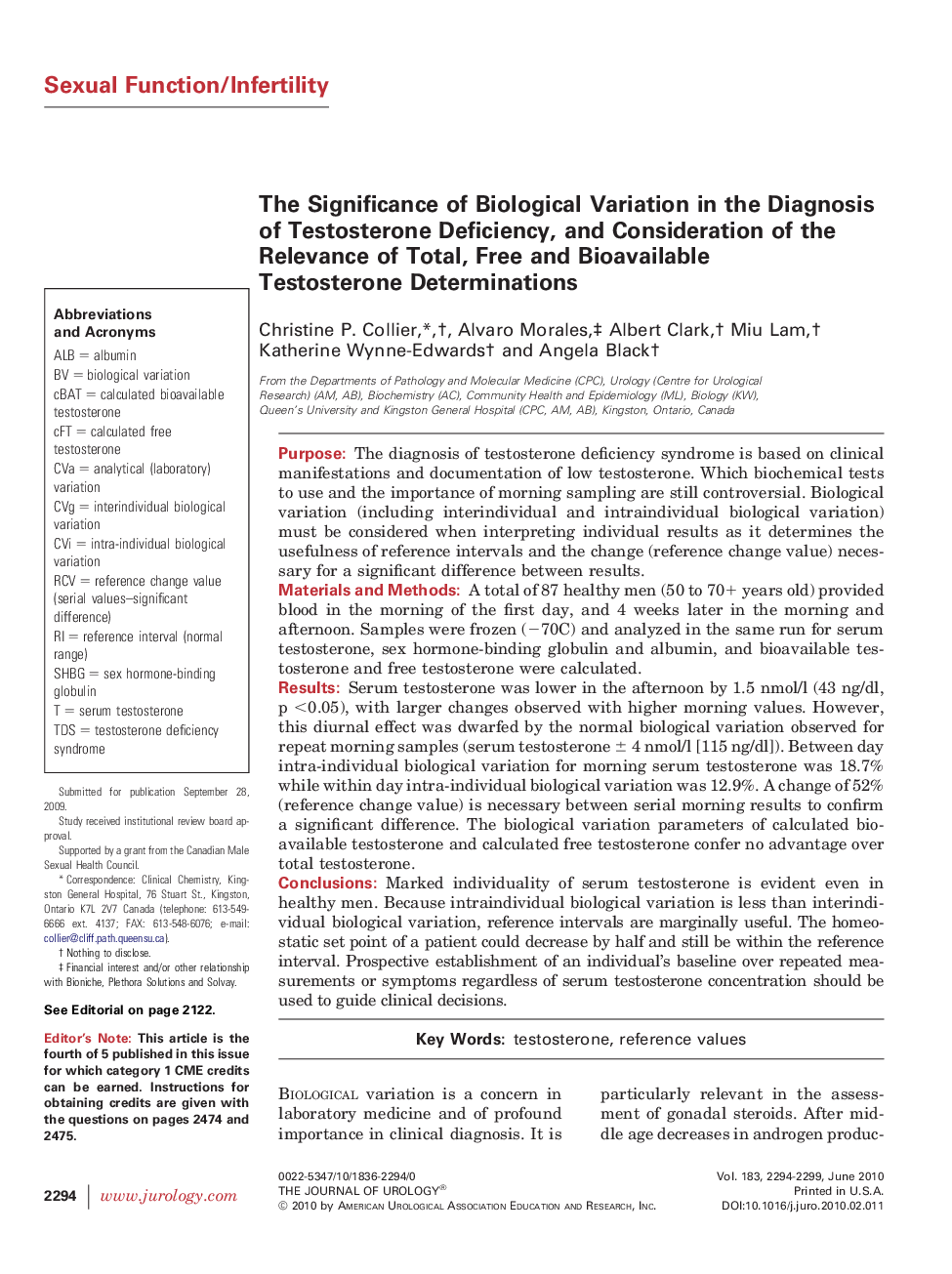| Article ID | Journal | Published Year | Pages | File Type |
|---|---|---|---|---|
| 3866045 | The Journal of Urology | 2010 | 6 Pages |
PurposeThe diagnosis of testosterone deficiency syndrome is based on clinical manifestations and documentation of low testosterone. Which biochemical tests to use and the importance of morning sampling are still controversial. Biological variation (including interindividual and intraindividual biological variation) must be considered when interpreting individual results as it determines the usefulness of reference intervals and the change (reference change value) necessary for a significant difference between results.Materials and MethodsA total of 87 healthy men (50 to 70+ years old) provided blood in the morning of the first day, and 4 weeks later in the morning and afternoon. Samples were frozen (−70C) and analyzed in the same run for serum testosterone, sex hormone-binding globulin and albumin, and bioavailable testosterone and free testosterone were calculated.ResultsSerum testosterone was lower in the afternoon by 1.5 nmol/l (43 ng/dl, p <0.05), with larger changes observed with higher morning values. However, this diurnal effect was dwarfed by the normal biological variation observed for repeat morning samples (serum testosterone ± 4 nmol/l [115 ng/dl]). Between day intra-individual biological variation for morning serum testosterone was 18.7% while within day intra-individual biological variation was 12.9%. A change of 52% (reference change value) is necessary between serial morning results to confirm a significant difference. The biological variation parameters of calculated bioavailable testosterone and calculated free testosterone confer no advantage over total testosterone.ConclusionsMarked individuality of serum testosterone is evident even in healthy men. Because intraindividual biological variation is less than interindividual biological variation, reference intervals are marginally useful. The homeostatic set point of a patient could decrease by half and still be within the reference interval. Prospective establishment of an individual's baseline over repeated measurements or symptoms regardless of serum testosterone concentration should be used to guide clinical decisions.
